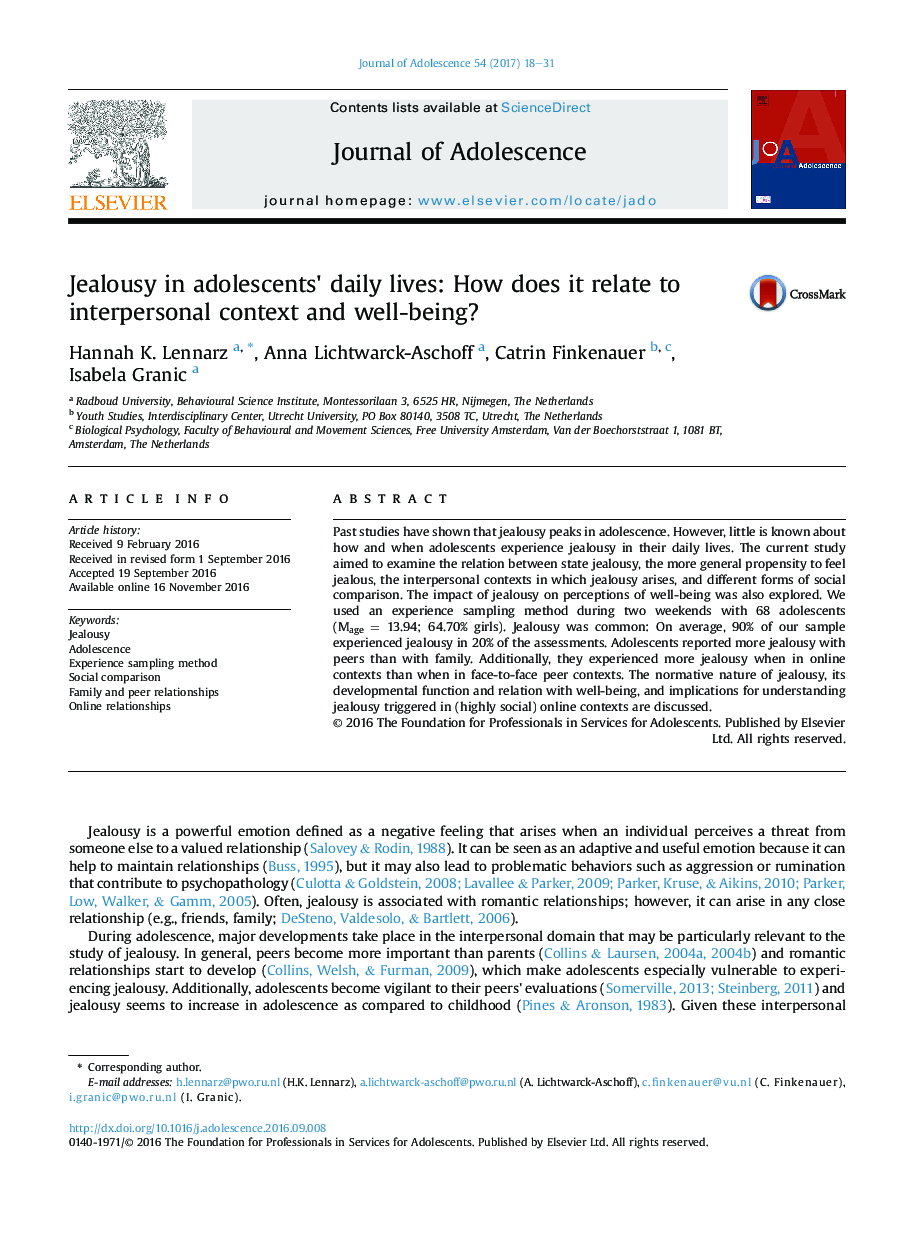| Article ID | Journal | Published Year | Pages | File Type |
|---|---|---|---|---|
| 5033862 | Journal of Adolescence | 2017 | 14 Pages |
Past studies have shown that jealousy peaks in adolescence. However, little is known about how and when adolescents experience jealousy in their daily lives. The current study aimed to examine the relation between state jealousy, the more general propensity to feel jealous, the interpersonal contexts in which jealousy arises, and different forms of social comparison. The impact of jealousy on perceptions of well-being was also explored. We used an experience sampling method during two weekends with 68 adolescents (Mage = 13.94; 64.70% girls). Jealousy was common: On average, 90% of our sample experienced jealousy in 20% of the assessments. Adolescents reported more jealousy with peers than with family. Additionally, they experienced more jealousy when in online contexts than when in face-to-face peer contexts. The normative nature of jealousy, its developmental function and relation with well-being, and implications for understanding jealousy triggered in (highly social) online contexts are discussed.
